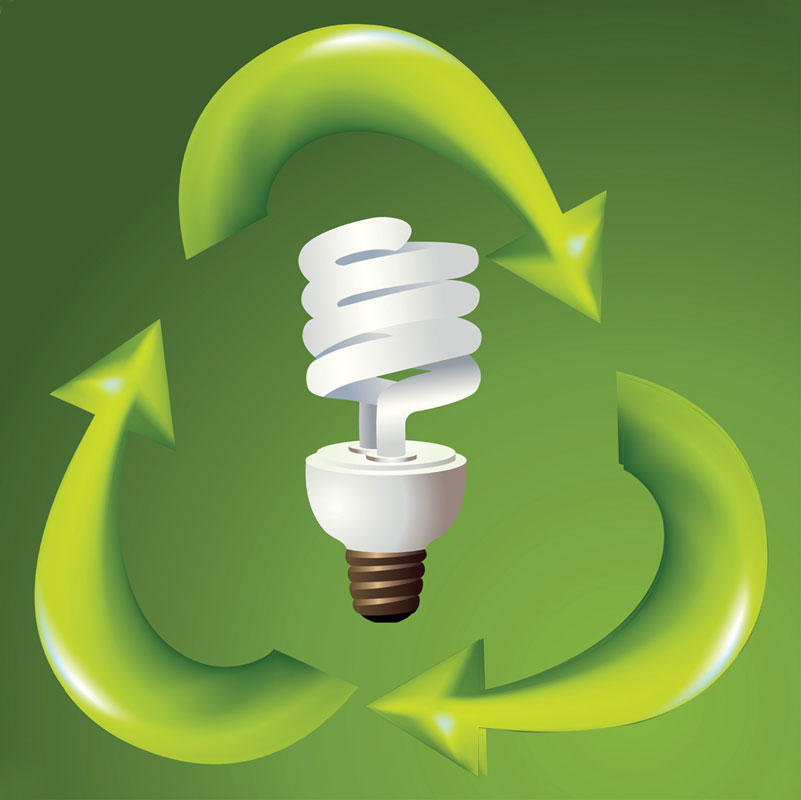No modern urban dwelling can do without electricity. It is the source of energy that enables us to run a host of appliances which help us maintain indoor temperature, cook, wash and what have you. It also lights up our homes and runs devices that entertain and enlighten us. Our focus this time is on lighting. It is that magic illumination that we switch on when dusk sets in or whenever natural light needs to be augmented to facilitate indoor activity.

Happily, the switchover to energy-efficient and environment-friendly lighting is easier said and done. All it requires is an evening of shopping and changing the lights you currently use. This simple exercise could help you save upwards of six per cent on your electricity bill.
So, here is a rundown on the various lighting options available in the market. Along with it is a little review on each option and what makes your choice closer to going green.
A switchover to energy-efficient and environment-friendly lighting could help you save upwards of six per cent on your electricity bill.
The source of light found in most homes is the incandescent bulb, which has seen many improvements since Joseph Swan and Thomas Edison invented it in the 19th century. It works on the simple principle that when electricity passes through the tungsten filament encased in a glass bulb it glows and produces heat and a yellow glow of light. The incandescent bulb comes in several sizes and voltages.
However, in recent years this bulb is slowly being replaced by more efficient Light Emitting Diodes (LEDs), Compact Fluorescent Lamps (CFLs) and Fluorescent tubes. For commercial and other special purposes and spaces there are halogen lamps, metal halide lamps, neon lamps, high intensity discharge lamps, and low-pressure sodium lamps.
Currently, LED is the one that is most popular. It has a long lifespan and is rated as being the most environment-friendly. It basically emits light through the movement of electrons in a semiconductor device that is assembled into the bulb. It does not have a filament and uses less power. LEDs give more light than incandescent lamps and help save energy. It may cost much more than an incandescent bulb, but in the long run proves to be cheaper as you save on replacement costs. LEDs are known to last up to 8–25 times longer than incandescent bulbs, while using only 25 to 30 per cent of the energy.
The best option for those who want to go green is switching to LED bulbs.
Many people are reluctant to replace all incandescent bulbs with LED lights because the upfront costs are higher. This is all the more so if the house or apartment is a fair-sized one. In fact, many consumers prefer to replace one bulb at a time. It is not a bad idea since this way the expense is divided over a longer period of time. Nevertheless, the benefits in terms of saving energy will begin trickling in and will soon build up.
Very often incandescent lighting is replaced by Compact fluorescent lamps (CFLs). These consist of a few tubular loops and resemble the incandescent bulb. It gives the same amount of light, uses less power, and lasts at least 10 times longer. However, CFL comes with a rider. It contains a small amount of toxic mercury and hence needs to be handled delicately after its life is over. If you are inclined to using CFL bulbs you will have to ensure they are disposed of in the correct manner along with other e-waste so that they reach the right place for recycling. CFLs may look pretty, but they are not the best environment-friendly option.
Quite popular for areas of the home that need a lot of light like the kitchen, the balcony or the bathroom is the fluorescent tube. This is a gas discharge tube that uses fluorescence to produce white visible light. It has a long life and has high luminous efficiency. It uses less power than an incandescent bulb but is more expensive. However, like CFLs, it needs to be disposed of carefully because of its gaseous content. It needs to be given to an e-waste handler for recycling.
There is no doubt that the best option for those who want to go green is switching to LED bulbs. They have two advantages over the others. They are mercury-free and give off little heat. Experts always explain that since you are looking for light from a bulb and not heat, any heat that is given out from a bulb means waste of energy. Also, bulbs generating heat require more air conditioning to keep a house cool in the summer months.
With governments encouraging citizens to switch to LED lighting and many states providing a subsidy on the bulbs, slowly and steadily the prices of LED bulbs are decreasing, making them more accessible. For long-term lighting options they are the best and help you transition to a greener lifestyle. The disposal of LEDs is also simple. They can be disposed of in the general trash can after wrapping them up carefully so that in case one of them breaks, it does not hurt the waste collector. Ultimately, the bulb will reach a recycler who will recover materials like glass and aluminium from it.
In the home, energy has many dimensions, and its efficient use is now a mantra for not only cutting electricity consumption but also reducing greenhouse gases and mitigating climate change.
Next time we will be looking beyond lighting to other avenues where we can do our bit to promote energy efficiency.
The writer is a senior journalist who writes on environmental issues.





